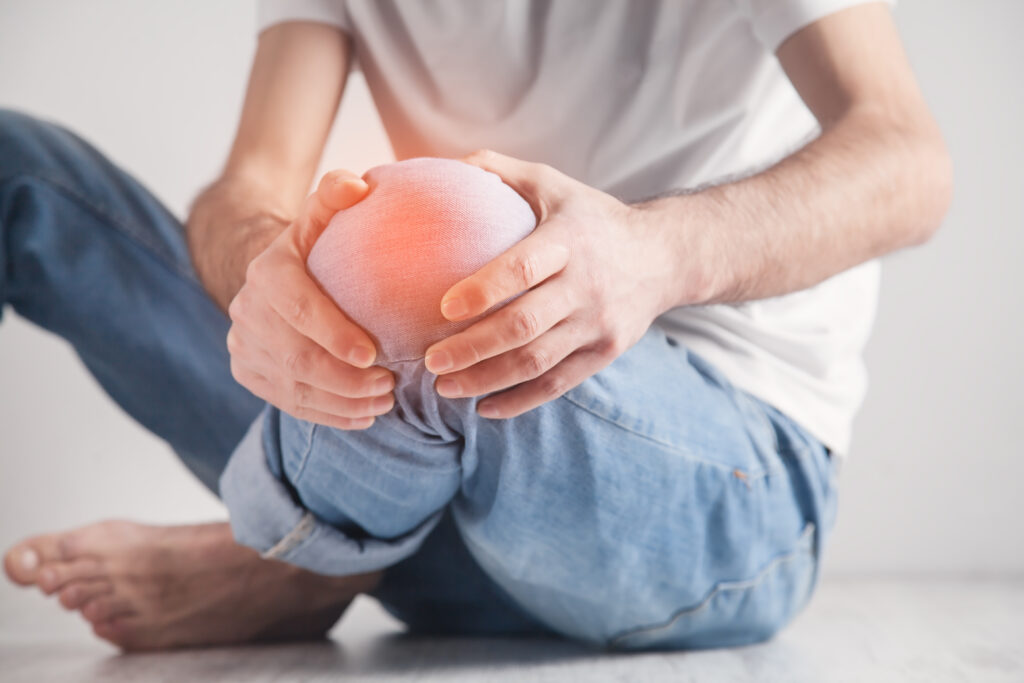If you're dealing with back pain in Calhoun, you might be wondering about the most effective treatments available. Options like physical therapy and chiropractic care are popular for their ability to target underlying issues and improve mobility. You may also find relief through innovative approaches like acupuncture or various massage techniques. Plus, pain management strategies can provide immediate comfort. But what other methods can enhance your recovery and support your overall well-being? Let's explore some of the top treatments that could make a difference for you.
Physical Therapy Options
Exploring physical therapy options can be a key step in managing back pain effectively. When you choose physical therapy, you're not just addressing the symptoms; you're tackling the underlying issues that contribute to your discomfort. A physical therapist will evaluate your condition and create a tailored treatment plan designed specifically for you.
One common approach is therapeutic exercises. These exercises strengthen the muscles supporting your spine, improve flexibility, and enhance your overall posture. By committing to these exercises, you'll likely notice increased mobility and a reduction in pain over time.
Another valuable aspect of physical therapy is manual therapy. Your therapist may use hands-on techniques to manipulate your spine and soft tissues. This can help alleviate tightness, improve circulation, and reduce inflammation in the affected areas.
Additionally, modalities like heat, ice, or electrical stimulation may be incorporated into your treatment plan. These techniques can provide immediate relief and help you engage in your exercise routine more effectively.
It's essential to remain consistent with your therapy sessions and follow your therapist's recommendations at home. By doing so, you're actively participating in your recovery and setting the stage for long-term improvements.
Chiropractic Care Benefits
Chiropractic care offers numerous benefits for those struggling with back pain. When you visit a chiropractor, they'll assess your spine and musculoskeletal system to identify misalignments or restrictions. By adjusting these areas, you can experience relief from pain and improved function.
One of the primary advantages of chiropractic care is its focus on holistic healing. Rather than just masking your symptoms, chiropractors aim to address the root cause of your discomfort. This approach not only alleviates pain but can also enhance your overall well-being.
You might find that regular adjustments lead to better posture and increased mobility, making daily activities more manageable.
Additionally, chiropractic care often involves personalized treatment plans that cater to your specific needs. Your chiropractor may incorporate exercises, stretches, and lifestyle recommendations to support your recovery. This thorough approach empowers you to take control of your health and promotes long-term results.
Another significant benefit is the minimal use of invasive procedures or medications. Many patients appreciate that chiropractic care focuses on natural techniques, minimizing potential side effects. You can trust that your chiropractor is committed to your health, providing a safe alternative to more aggressive treatments.
Finally, the supportive environment of a chiropractic clinic can help you feel more at ease during your healing journey. With regular visits, you'll build a rapport with your chiropractor, fostering trust and open communication.
This relationship can enhance your treatment experience, ultimately leading to a better quality of life as you manage your back pain.
Pain Management Medications
Pain management medications can play an essential role in alleviating back pain, offering relief when other treatments aren't enough. When you're struggling with discomfort, these medications can help you regain your quality of life. There are several options available, and understanding them can empower you to make informed choices.
Over-the-counter (OTC) options like ibuprofen or acetaminophen can provide initial relief for mild to moderate back pain. These medications work by reducing inflammation and blocking pain signals.
If OTC options don't cut it, prescription medications may be necessary. Your doctor might recommend stronger nonsteroidal anti-inflammatory drugs (NSAIDs) or muscle relaxants to help reduce pain and muscle spasms.
In more severe cases, opioids might be prescribed, but they come with risks of dependency and side effects, so it's vital to use them cautiously and under strict medical supervision. Corticosteroids can also be an option, either through oral tablets or injections, targeting inflammation directly at the source.
Additionally, topical treatments like creams or patches can provide localized relief without the systemic side effects of oral medications.
Always consult your healthcare provider before starting any medication. They'll assess your specific condition and recommend the best approach tailored to your needs.
Ultimately, pain management medications can be a valuable part of your back pain treatment plan, helping you find the relief you seek and allowing you to engage in daily activities with more comfort.
Acupuncture Techniques
If you're considering acupuncture for back pain, you'll discover a range of techniques that can help relieve your discomfort.
Many people find significant benefits from this ancient practice, which may include improved mobility and reduced pain.
It's also important to know how often to schedule your sessions for ideal results.
Benefits of Acupuncture
Over the years, acupuncture has gained recognition as an effective treatment for back pain, offering numerous benefits that go beyond mere symptom relief.
When you choose acupuncture, you're not just addressing your pain; you're embracing a holistic approach to your well-being.
- Reduces inflammation: Acupuncture can help lower inflammation, which often contributes to back pain, allowing for improved mobility and comfort.
- Enhances blood flow: By stimulating specific points, acupuncture promotes better circulation, delivering essential nutrients and oxygen to affected areas, facilitating healing.
- Promotes relaxation: The calming nature of acupuncture helps reduce stress and tension, which can exacerbate your pain.
These benefits make acupuncture a compelling option for managing back pain.
Many patients report not only reduced pain levels but also an overall improved sense of balance and health.
Additionally, it can complement other treatments, enhancing their effectiveness.
If you're exploring alternatives for back pain relief, consider how acupuncture might fit into your treatment plan.
Techniques for Pain Relief
Acupuncture techniques offer various approaches to relieve back pain effectively. One popular method involves inserting fine needles into specific points on your body, known as acupoints. This practice stimulates the nervous system, promoting the release of natural painkillers and increasing blood flow to the affected areas.
Another technique you might consider is electroacupuncture, where a mild electrical current is applied to the needles. This can enhance the effects of traditional acupuncture, providing deeper pain relief and muscle relaxation.
You can also try trigger point acupuncture, which focuses on tight knots in your muscles. By targeting these specific areas, the treatment can help alleviate tension and reduce pain.
For those who are nervous about needles, acupressure is a needle-free alternative. It uses pressure applied to the same acupoints, allowing you to experience similar benefits without the discomfort of needles.
No matter which technique you choose, it's vital to work with a qualified acupuncturist. They'll tailor the treatment to your specific needs, ensuring you receive the most effective pain relief for your back pain.
Regular sessions can help maintain your progress and improve your overall well-being.
Session Frequency Recommendations
Finding the right frequency for your acupuncture sessions can greatly impact the effectiveness of your treatment for back pain.
It's crucial to tailor your schedule to your specific needs and response to treatment. Here are some factors to take into account:
- Severity of Pain: If your pain is acute, you might benefit from more frequent sessions, such as two to three times a week.
- Chronic Conditions: For ongoing issues, weekly sessions may help maintain progress and prevent flare-ups.
- Personal Response: Everyone reacts differently; track how you feel after each session to determine if adjustments are necessary.
Generally, after an initial phase of frequent visits, many patients shift to maintenance sessions every two to four weeks.
Communication with your acupuncturist is key; they can recommend a suitable frequency based on your progress.
Remember, the goal is to alleviate pain effectively while ensuring you don't overwhelm your body.
Listening to your body and staying in tune with your pain levels will help you find the right balance for your acupuncture treatment.
With the right session frequency, you can enhance your recovery and enjoy a more active lifestyle.
Massage Therapy Approaches
Massage therapy can be a powerful tool in managing back pain, offering various techniques tailored to your needs.
You'll find that these approaches not only relieve tension but also enhance overall wellbeing.
To get the best results, it's essential to find a qualified therapist who understands your specific issues.
Techniques Used in Massage
When you seek relief from back pain, understanding the various techniques used in massage therapy can be essential to your recovery.
Different approaches can target specific areas of discomfort and help alleviate tension in your muscles. Here are some common techniques you might encounter:
- Swedish Massage: This technique uses long, flowing strokes to promote relaxation and improve circulation.
- Deep Tissue Massage: Focusing on deeper layers of muscle and connective tissue, this method targets chronic pain and tension.
- Trigger Point Therapy: This approach identifies and releases specific tight areas, or "trigger points," that can refer pain to other parts of your back.
Benefits for Back Pain
Experiencing relief from back pain through massage therapy can greatly enhance your quality of life. This holistic approach not only eases discomfort but also promotes relaxation, allowing you to better manage daily stressors.
When you engage in regular massage sessions, you may find that your muscle tension considerably reduces, leading to improved mobility and flexibility.
Massage therapy also stimulates blood circulation, which helps in delivering essential nutrients to your muscles and tissues. This increased blood flow can speed up the healing process of any injuries or strains you might have, allowing you to recover more quickly.
Additionally, massage can trigger the release of endorphins—your body's natural painkillers—helping to elevate your mood and provide a sense of well-being.
Finding Qualified Therapists
How do you find a qualified therapist who meets your specific needs for back pain relief? It's essential to choose someone with the right expertise and experience. Here are some key considerations:
- Credentials: Verify the therapist is licensed and certified in massage therapy and has specialized training in treating back pain.
- Experience: Look for therapists who've a proven track record in managing back pain specifically. Ask about their experience with techniques like myofascial release or deep tissue massage.
- Reviews and Referrals: Read online reviews and seek recommendations from friends or healthcare professionals to find trusted therapists.
Once you've gathered potential candidates, don't hesitate to ask questions during your initial consultation. Inquire about their approach, treatment plans, and expected outcomes.
Exercise and Stretching Routines
Incorporating exercise and stretching routines into your daily life can considerably alleviate back pain and enhance overall mobility. Regular physical activity not only strengthens the muscles surrounding your spine but also improves flexibility, which can prevent future injuries.
Start with low-impact exercises like walking, swimming, or cycling. These activities help maintain cardiovascular health while being gentle on your back. Aim for at least 30 minutes of moderate exercise most days of the week. If you're new to exercise, consider breaking this into shorter sessions, gradually increasing as your comfort level grows.
Stretching is equally important. Focus on stretches that target the back, hips, and legs. Simple stretches like the cat-cow or child's pose can release tension and improve flexibility. Make it a habit to stretch daily, especially before and after workouts. Hold each stretch for about 15-30 seconds, breathing deeply to enhance relaxation.
Incorporating core-strengthening exercises can also provide substantial benefits. Planks, bridges, and pelvic tilts are excellent for building strength in your abdominal and lower back muscles. Stronger core muscles lead to better posture and support for your spine, reducing the risk of pain.
Always listen to your body; if something doesn't feel right, modify the exercise or consult a professional. Consistency is key, so find activities you enjoy to stay motivated.
Innovative Treatment Methods
Innovative treatment methods are transforming how we manage back pain, offering new hope for relief. These approaches focus on personalized care and often integrate cutting-edge technology to address the root causes of discomfort.
If you're searching for effective alternatives, consider exploring these exciting options:
- Regenerative Medicine: Techniques like platelet-rich plasma (PRP) therapy harness your body's healing capabilities to rejuvenate damaged tissues.
- Telehealth Consultations: Virtual visits with specialists allow you to receive expert advice and tailored treatment plans without leaving your home.
- Neuromodulation: This technique uses electrical stimulation to alter nerve activity, providing pain relief for chronic back pain sufferers.
As you investigate these innovative methods, it's vital to consult a healthcare professional who can guide you through the options best suited to your condition.
Treatment plans may vary greatly based on individual needs, so finding a specialist who understands your pain is fundamental.
Technology continues to influence back pain treatments, with advances like smart wearables that monitor your posture and movement patterns. These devices can help you identify triggers and make necessary adjustments.
Additionally, virtual reality (VR) therapy is emerging as a tool for pain management, offering immersive experiences that distract from discomfort and promote relaxation.
Lifestyle Changes for Relief
Making lifestyle changes can considerably enhance your back pain management efforts. One of the simplest yet most effective changes is improving your posture. Whether you're sitting at a desk or lifting objects, maintaining proper alignment can help reduce strain on your back.
Consider using ergonomic furniture and taking frequent breaks to stretch and realign your body.
In addition to posture, regular physical activity plays a vital role in relieving back pain. Engage in low-impact exercises like walking, swimming, or yoga to strengthen your core muscles and improve flexibility.
Aim for at least 30 minutes of activity most days of the week. Don't forget to consult with a healthcare professional before starting any new exercise routine.
Diet also has a significant impact on your overall health, including back pain. Eating a balanced diet rich in anti-inflammatory foods, such as fruits, vegetables, whole grains, and healthy fats, can help minimize discomfort.
Staying hydrated is essential too; it can keep your spinal discs well-nourished.
Finally, consider stress management techniques like meditation or deep-breathing exercises. Stress can lead to muscle tension, which may exacerbate your back pain.
Finding ways to relax and unwind can make a noticeable difference.
Conclusion
In Calhoun, you have plenty of effective options for managing back pain. From physical therapy and chiropractic care to acupuncture and massage therapy, you can find the right approach that suits your needs. Incorporating exercise, stretching routines, and making lifestyle changes can further enhance your recovery. Don't hesitate to explore these treatments and consult with professionals to create a personalized plan. Taking charge of your back pain is possible, and relief is within reach!



